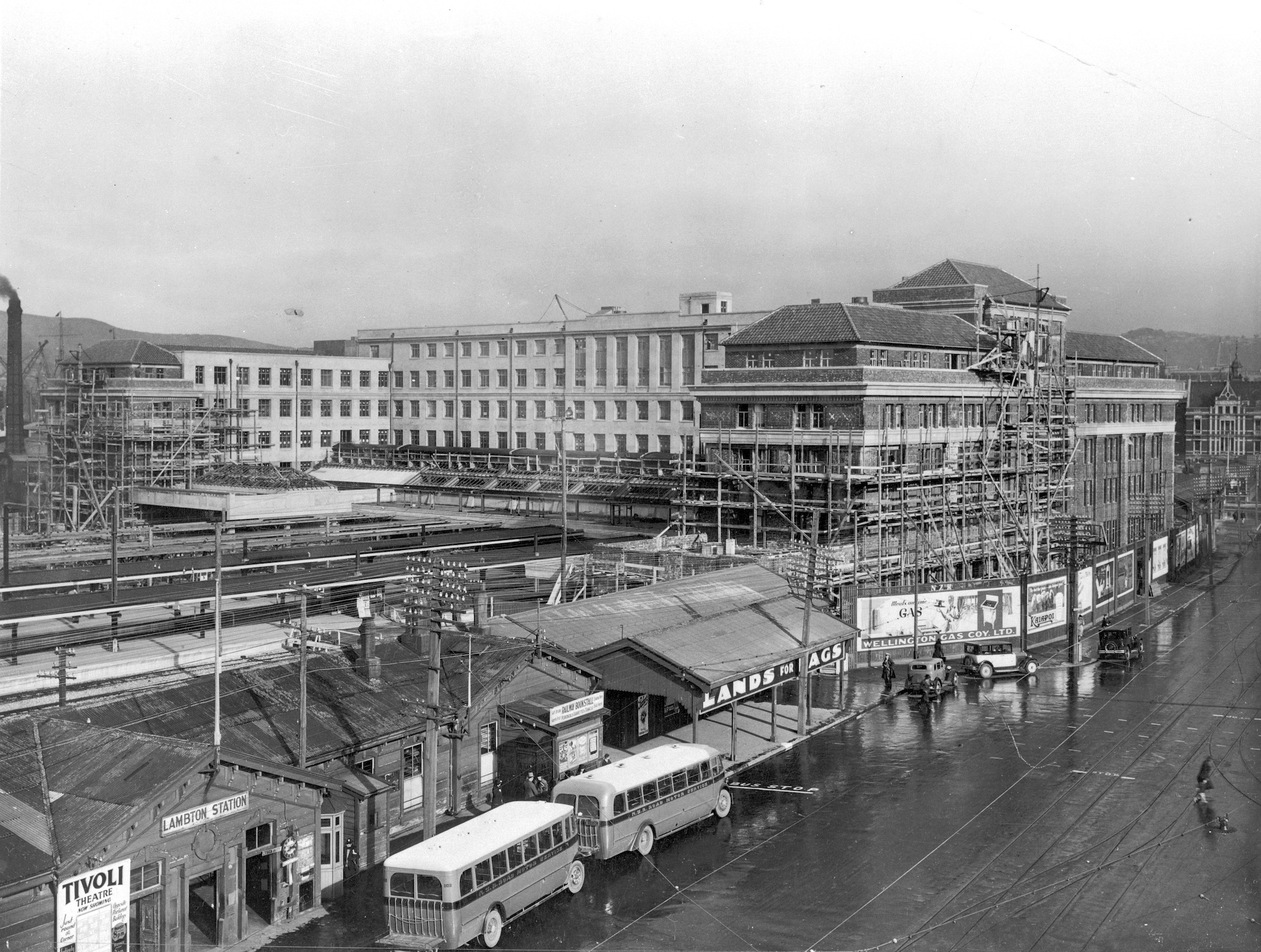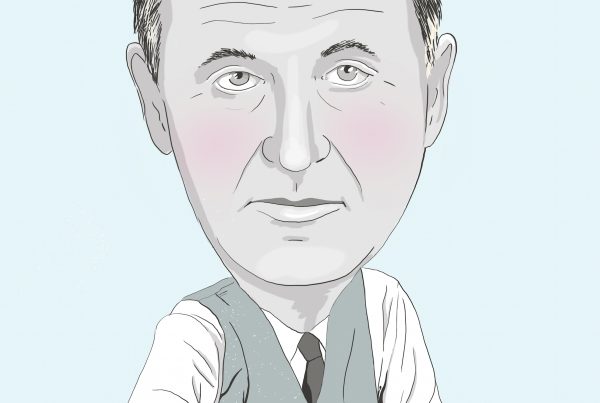
Before then, Wellingtonians had had to put up with the very shabby Lambton Station. You can see its ageing facade at the bottom left, facing Thorndon Quay. Just as unprepossessing was the old Thorndon Station, set amongst the warehouses a kilometre north. Together, they provided a dingy welcome to the capital city. Politicians had been talking about a new central station for at least 30 years. For Wellingtonians it had been a long wait.
The best view is from the front, of course. This rear/side view, though, would have seemed almost as impressive, with its nine railway lines coming into the new concourse, and the five storeys of offices, nearly all of which were occupied by the huge and newly centralised Department of Railways. It was all part of a major overhaul of local and national rail services, with better access to the port, a quicker main trunk route through the Tawa tunnel, and new suburban lines.
Some see the station as a highlight in our architectural history. Alternatively, it can seem a bit of a mishmash, with its enormous neo-classical entrance pillars, and Spanish mission-style roof. But it certainly is an imposing sight, with its expansive entrance plaza, richly coloured external brickwork, and the high vaulted ceilings and ornate detail of the ground floor foyers.
Some of that glory has faded now. The station is no longer so central to the city. Apart from a few tourists, no one uses rail for long-distance travel anymore, which means the old luggage stores, formal dining room and shower facilities have all gone. But the new sports bar and supermarket do a good trade, university students now throng through the old Railway Department offices, and thousands of commuters surge through every day, coming and going from the northern suburbs.
This photograph is featured in a new exhibition at the National Library, about the pioneering commercial art of the Railways Publicity Department. Examples of its work can be seen on the street-side hoardings beside the new station. Such posters look much better in colour and the exhibition is worth a visit.




